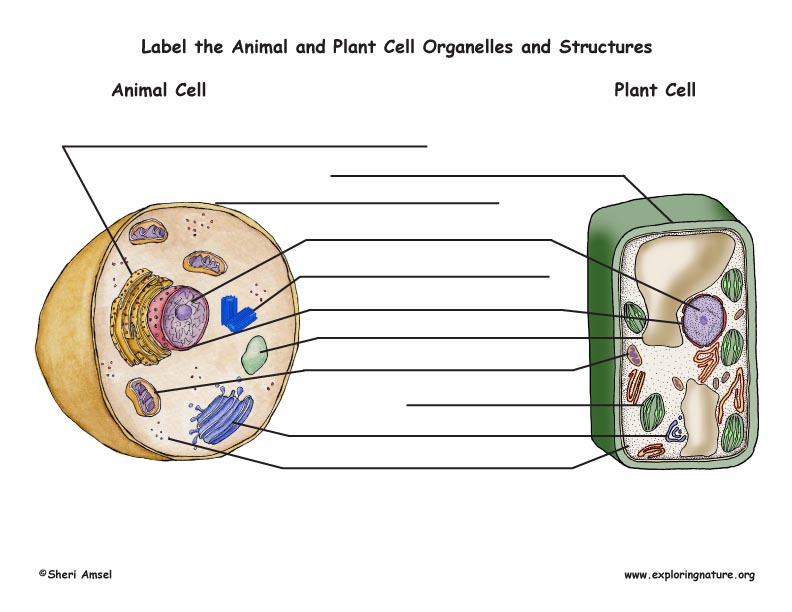

The animal cell is going to have a plasma membrane and the plant cell is going to have a plasma membrane and they actually can both have tunnels from neighboring cells, or tunnels between neighboring cells. Now, if we go one layer deeper, we get to the plasma membrane, the cellular membrane, and we see that that is common to both. So, the cell wall is going to be in a plant cell. Now when we think about the extracellular matrix for a plant cell, we also think about, there's some other components that are involved in the actual cell wall, and so the cell wall is a key difference between plant and animal cells. You see on this animal or outside of this animal cell, you see all these collagen fibers and everything else, all these fibers that are holding these cells into place and allow these cells to relate to each other, and actually, depending on what's inside of it, can even help signal different things to the cells, so this is an extracellular matrix.

So we see in both of them, we see the extracellular matrix. So let's start with the, what's outside of the cell. And what I have on the right, this should be indicative of a plant cell. Let's give ourselves an overview, or synthesis, of all that we've learned about plant and animal cells, and what I have over here on the left, this is supposed to be indicative of an animal cell. This lack of self-suffiency means that animals have to "hunt" for food or at the very least having fleshy bodies capable of more movement is useful in that aspect. However, animals consume there energy through other organisms. Plants getting there energy from the sun, don't need that much movement.

Having such rigid cells would mean we have to trade off our wide range of movement. Now how come animals did not evolve in such a way. It is not really a "necessity" but is useful. While plants are stiff (in comparison).Īs for why, stiffness and rigidity are a form of protection and also the reason as to how plants can grow into complex shapes maximizing there potential for further plant growth. We do however have muscles and bones(stiffness is caused by the matrix and NOT actual cells) to stand upright. Animals are fleshy and malleable because they lack the rigidity caused by a cell wall. A cell wall is more of a structural layer outside the cell membrane, mainly composed of cellulose but has other things, causing rigidity. First of all, both plants and animal cells have a cell membrane.


 0 kommentar(er)
0 kommentar(er)
